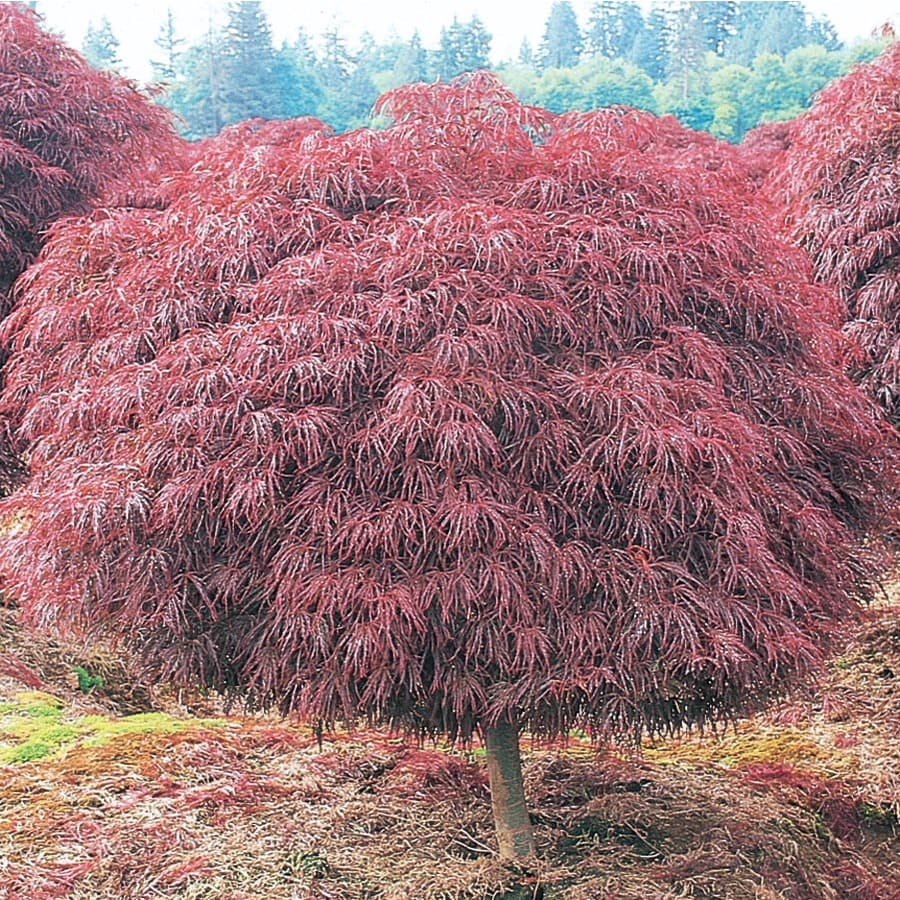

Either condition can harm a Japanese Maple.įeed your tree in early spring and when planting with a slow release fertilizer. Do not allow the soil to dry completely or be overly saturated. This cultivar is acclaimed for its outstanding deep red to purple color and dissected, mounding foliage. Leaf scorch can be caused by a lack of soil moisture or excessive exposure. Mulch helps retain soil moisture and keep roots cool.
#Crimson queen red japanese maple full#
Deep red-purple summer foliage, changing to scarlet in autumn. A full sun or part shade lover, this plant is easily grown in moist, organically rich, slightly acidic, well-drained soils. Japanese Maples should be watered often enough to keep the soil moist. Japanese maple with a weeping, fine-leaved presentation. Do not allow the mulch to touch the trunk as this increases the chances of pests and disease. Mulching will keep the roots moist and protect them from extreme temperatures in winter.

However, they will adapt to a variety of soils. Palmate, lace-like leaves emerge purple-red, mature red in. Japanese Maples prefer soil that is well-drained, but moist, neutral to slightly acidic, and nutrient rich. Japanese Maple Crimson Queen is a deer resistant, deciduous tree with weeping growth habit. Acer, palmatum, dissectum, red, crimson, queen, japon, akaaac, Cutleaf, Japanese, Threadleaf, Maple,. Leaf scorch is not going to affect the overall health of your tree. Keep your tree watered if you do notice leaf scorch, but don't panic.

In full sun you may see some leaf scorch when these trees are young, especially if they are not getting adequate water. Perhaps the most popular of all red lace leaf varieties, the Crimson Queen Japanese Maple is prized for its display of crimson red foliage and attractive. For best results provide some shade in hotter growing zones like 8 and 9. Lace Leaf Japanese Maples tolerate full sun to part shade. However, if you avoid freezing and hot temperatures you can plant your maple almost any time of the year. Small, weeping tree with dark red foliage that holds its color through summer. This tree is known for holding its red leaf-color through the summer better than any other form, even in shade, making it certainly the best choice for those locations. Spring and fall are ideal times to plant. Crimson Queen is probably the top-pick of the red-leaved, weeping forms, growing into a large shrub ten feet tall and about the same across. When planting your Crimson Queen Japanese Maple be sure you have the right location and conditions for your new tree to thrive.


 0 kommentar(er)
0 kommentar(er)
